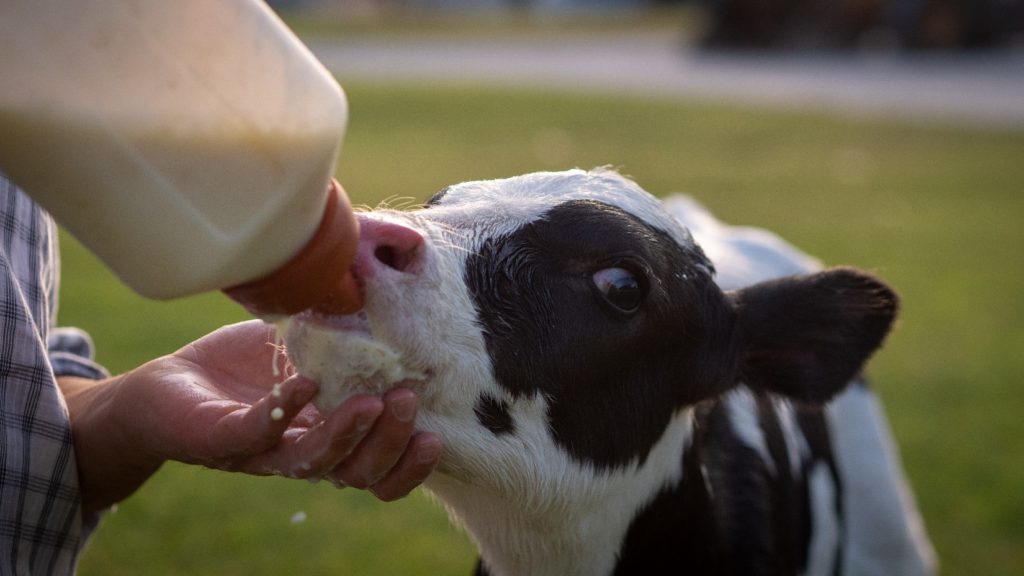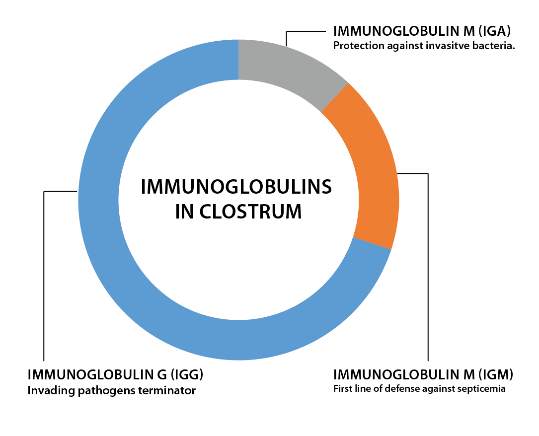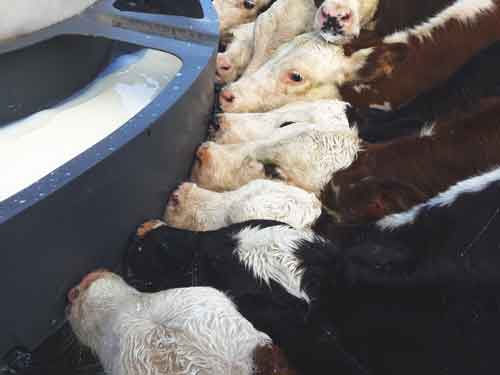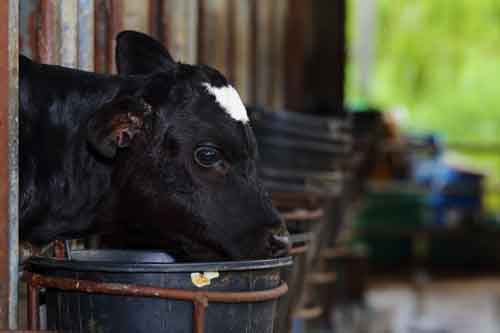Feeding Dairy Calves from Birth to Weaning

Introduction
First three months after birth are the most critical rearing period for the young calves. The success of this first critical calf rearing period much depends on farmers paying special attention to every detail in terms of housing, nutrition and health management. Among the biological, environmental, and nutritional stressors, establishing a perfect calf nutrition program is the most important part of this phase.
Colostrum Feeding
The correct amount of high-quality colostrum feeding immediately is the one of the most important management practice in calf nutrition. Colostrum contains immunoglobulins, the large proteins that absorbed by the calf’s gut, resist disease challenges
There are three types of immunoglobulins found in the colostrum:
- Immunoglobulin G (IgG) helps identify and destroy invading pathogens.
- Immunoglobulin M (IgM) works as the first line of defense against septicemia.
- Immunoglobulin A (IgA) protects the mucosal surfaces,
such as the intestine, from invasive pathogenic bacteria.

Colostrum also contains vitamins, minerals, fat and carbohydrate that support metabolism, growth and needed for additional stimulation of the calf’s immune system.
The rumen of the calf is nonfunctional at the time of birth. That means nutrition for the newborn calf is essentially feeding a non-ruminant that is unable to digest fiber. Colostrum fed to the newly born calf bypasses the rumen and reticulum and flows via the omasum to the abomasum. Colostrum components are primarily digested in the abomasum and small intestine. The whey components of the colostrum pass out of the abomasum within a few minutes into the small intestine and are absorbed into the bloodstream during the first 24 hours after birth.
After years of experiments and observations, nutritionists have come to this conclusion that calves with adequate colostrum feeding grow better and have lower mortality and health issues when compared to calves with less or zero colostrum feeding.
Liquid Feeding
After colostrum feeding, farmers must have a comprehensive plan to meet the calves’ nutrition requirements in the upcoming days. Now, it is time to select the type of liquid feed to be used in supplying nutrients to the calf. Whole milk is the primary liquid feed for calves. Whole milk contains higher fat and protein levels than most milk replacers. Ensure the milk is of a uniform temperature.
Whole milk will supply sufficient protein and energy for calves if fed at 10% of bodyweight. Overfeeding or inconsistent feeding of whole milk can cause indigestion and scouring. Whole milk may be deficient in trace minerals and vitamins. This can be accomplished by feeding a quality calf starter, Dasan-20 calf starter in addition to liquid feeding.

Calf milk replacers provide a convenient way to feed pre-ruminant calves. Milk replacers are available in powder form and mixed with water just before feeding. Differentiating between products can be difficult. However, most differences are levels of protein and energy.
Calves can be fed milk replacer anywhere and at any time without having whole milk. All milk replacers should be thoroughly mixed well in warm water typically between 110 F and 120 F according to the manufacturer’s directions.
Concentrates Ration / Calf Starter
Introduce concentrates/ration (calf starter) from day 3 onwards. Dasan-20 Calf Starter increases the numbers and species of bacteria in the rumen. Dasan Feeds uses high-quality ingredients which are palatable and of suitable texture to stimulate rumen function. Feeding Dasan-20 calf starter stimulates the growth of anaerobic bacteria, which are involved in breaking down protein and digesting fiber. Calves are ready to be weaned when they eat more than 1.5 kg of concentrate per head/per day.

Newly born calves can be particularly vulnerable to changes in temperature. In winter, cold temperature affects energy requirements for calves. At low temperatures, a calf uses the energy to maintain its body temperature and may not achieve the targeted growth rate and better weight gain. Calves housed in cooler conditions will consume more dry matter from Dasan-20 calf starter to maintain body temperature and healthy growth rates.
Forages
Although research has shown that calves can consume forages prior to weaning, but it is not necessary until a time when calves consume 01-1.5 kilogram of Dasan-20 calf starter. A general recommendation would be to start presenting hay at age of six to seven weeks, monitor starter consumption to ensure that hay is not being overeaten. Long forage is beneficial to promote the growth of the rumen muscular layer and maintain the health of rumen epithelium. While it is not necessary to offer forages at less than eight weeks of age. Fermented forages can be fed to calves, but is not recommended for calves less than three months.
Water
Water is a critical nutrient for calves and should be offered, beginning at three to four days of age. Calves are born with nonfunctioning rumen, which is developed by fermentation of concentrate and water. Providing calves adequate water supply is most important. Ensuring the water is fresh is equally important. Providing calves with free-choice water from their first few days of life is one of the easiest way to improve rumen development, weight gain and preparation of calves for a smooth weaning transition. When calves drink free-choice water, it is directed to the rumen and aids in the fermentation of Dasan-20 calf starter. Calves offered free-choice water consume more calf starter and begin to grow at a faster rate. A young calf under two weeks of age will drink very little water, but you still need to give access to water so the calf becomes used to it.
Water consumption may vary according to different and temperatures, source of nutrient and feed intake. In summer, high ambient temperature and humidity can cause heat stress in calves. According to the nutritional point of view, adequate free access to clean water at all times is the single most way to handle the heat stress in calves. One thing is to remember that water intake should be under control to prevent overconsumption and potential water toxicity problems in the extreme months.
Note: Keep Dasan-20 Calf Starter keep in good storage conditions, feeding equipment and environment in good hygienic condition to encourage intake.
